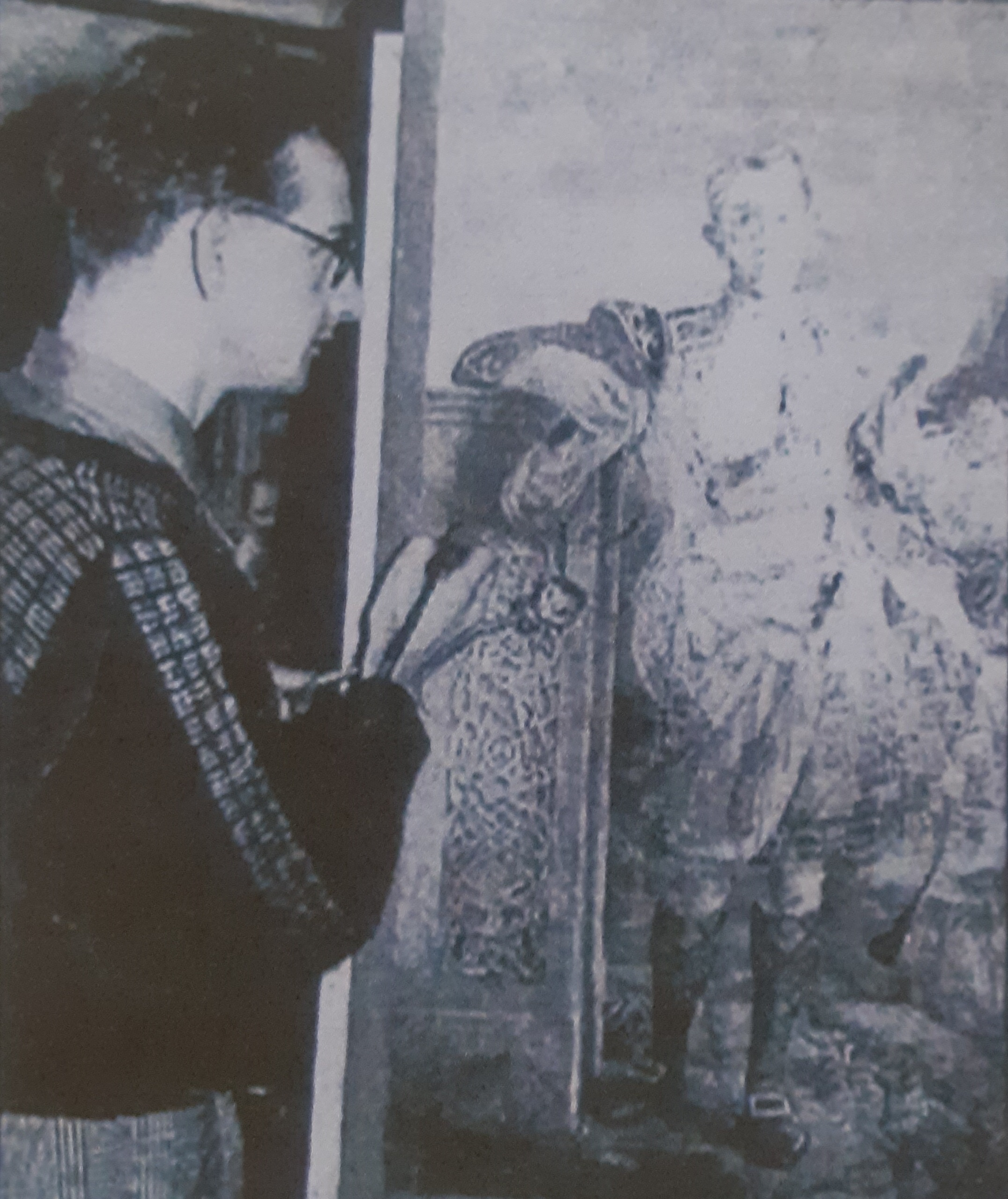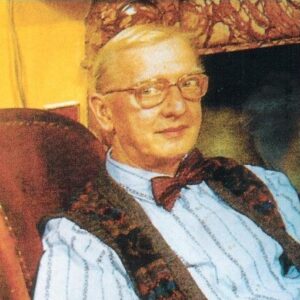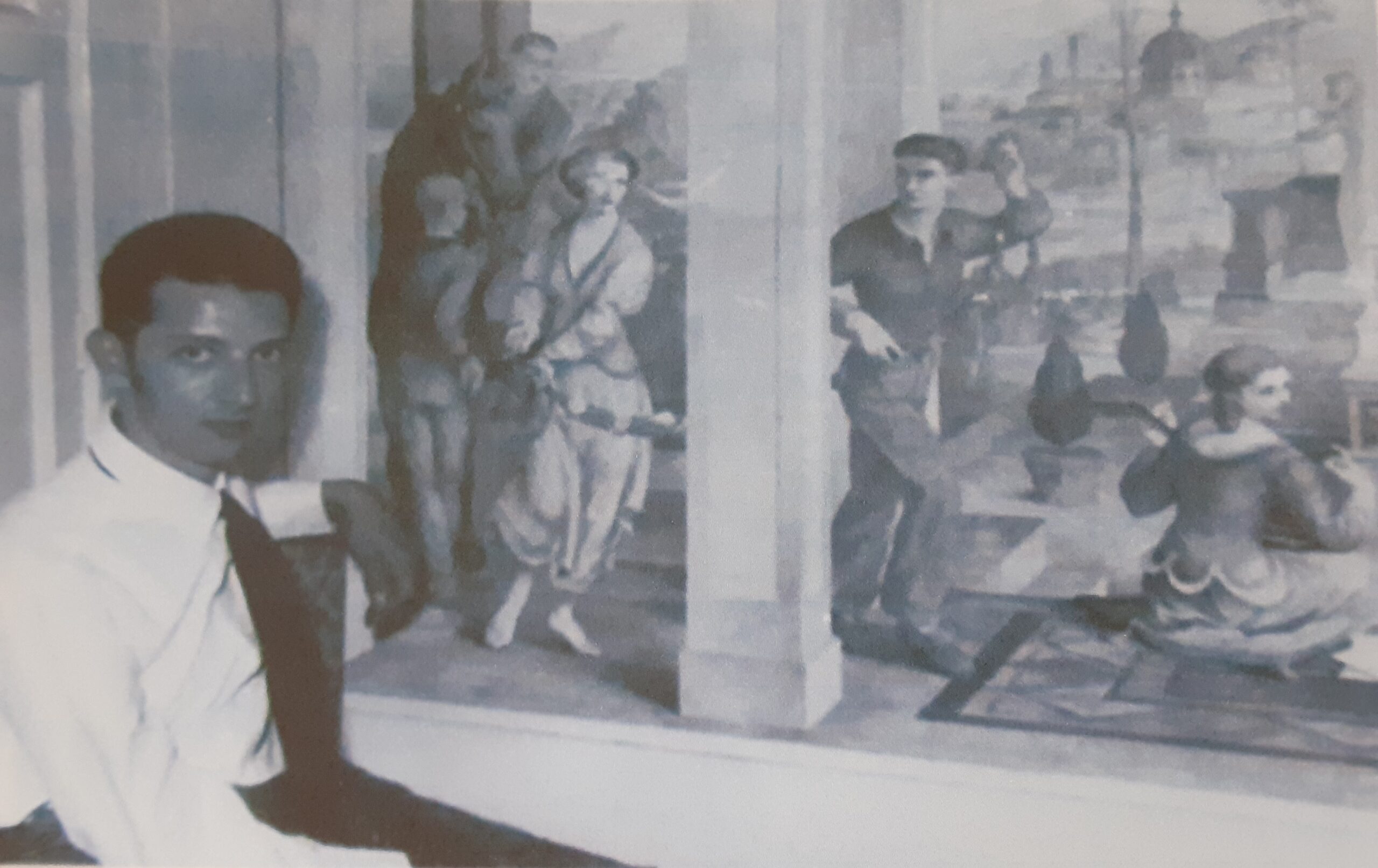
Da Vinci of Denfield Avenue: How artist William McLaren used a council flat wall to brush up on his skills
An incredible Renaissance style mural by artist William McLaren was discovered in an unassuming council flat in Fife.
McLaren was an illustrator, painter and artist who worked for magazines such as Radio Times and The Listener, and The Sphere, a weekly newspaper.
His commissions also included murals for the magnificent Hopetoun House in West Lothian.
But he road-tested his lavish interior designs at the three-bedroom flat in Dundonald, where his family moved when McLaren was 16.

A housing inspector found a work by McLaren after his death.
Adorning the walls of 29 Denfield Avenue were McLaren’s Italian Renaissance scenes, which gave him the confidence to execute his work on a far grander scale.
The artwork was found by Carolyn Johnston, a former housing officer with Kirkcaldy district council, who inspected the flat after his death in 1987.
‘A colleague and I inspected Mr McLaren’s house and I was amazed to discover a mural on one of the walls,’ she said.
‘I remember my manager saying the tenant had been ‘some kind of artist.’
Carolyn, who also grew up in Cardenden and later lived on the same street, added: ‘On reflection, I feel guilty about our lack of local knowledge of who he was, or how highly regarded he was – and how no attempt was made to photograph or preserve his art.
‘So, just as Charles Rennie Mackintosh’s art was once emulsioned over in Dysart Kirk, the murals at Denfield Avenue disappeared under coats of bog standard magnolia.
‘Hindsight is such a great thing.’

McLaren went on to be commissioned to create a series of paintings for stately homes.
Cultural charity OnFife is offering McLaren-themed tours of its Collections Centre in Glenrothes on 27 September – the 100th anniversary of the artist’s birth.
Visitors can enjoy McLaren’s paintings, drawings and book illustrations, and access the artist’s school records, which are held in OnFife’s archives collection.
Paintings and drawings by McLaren will also go on show at Kirkcaldy Galleries in October.
Born in Ferniegair, Lanarkshire, McLaren moved to Dundonald aged four and later attended Beath High School before studying at Edinburgh College of Art.
McLaren’s style was influenced by the wood engraver and book illustrator, Joan Hassall.
Studying the Old Masters on trips to France and – more significantly, Italy – McLaren honed his skills in a range of pictorial techniques.
McLaren became a prolific book illustrator too, designing dust jackets for more than 150 titles –among them work by Enid Blyton and Jules Verne.
The artist also illustrated the popular gardening books of Beverley Nichols
After moving to Edinburgh in 1963, McLaren was commissioned by Lord Linlithgow to create a series of paintings for the staircase at Hopetoun House, Scotland’s largest residence.
It led to a number of decorative commissions in private houses and public buildings, where McLaren developed his trompe l’oeil style.
Subsequent commissions included murals at Wemyss Castle in Fife, Hawthornden Castle in Midlothian, and East Lothian’s grandest residence, Tyninghame House.
McLaren also completed a magnificent Renaissance-style mural at St Adrian’s Church, West Wemyss, and the ceiling mural of the King’s Theatre in Edinburgh.
OnFife archivist Andrew Dowsey will be leading the tours next month.

William McLaren Denfield Avenue.
‘William McLaren never became a household name, possibly because his work – which reflected his love of previous eras – was out of step with popular taste,’ he said.
‘Yet, by the time of his death in 1987, he had produced a diverse array of high quality work that still enchants many people today.’
Cardenden History Group is also staging an exhibition at Auchterderran Church Hall on 27 and 28 September from 12 to 4pm.
Tours at the Collections Centre start at 10.30 and 2pm.
Read more on Scottish Field’s News pages.
Plus, don’t miss the October issue of Scottish Field magazine.
TAGS

